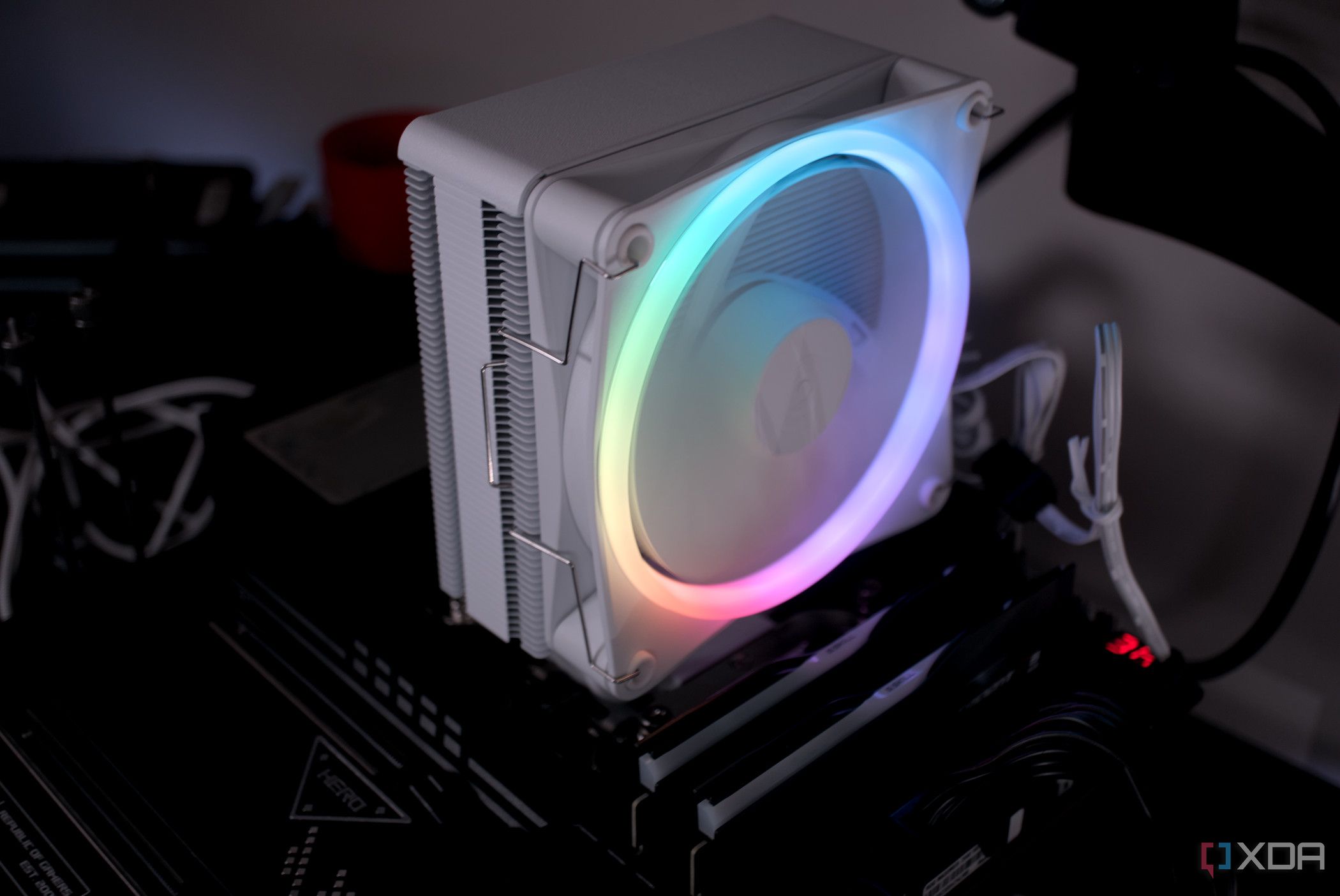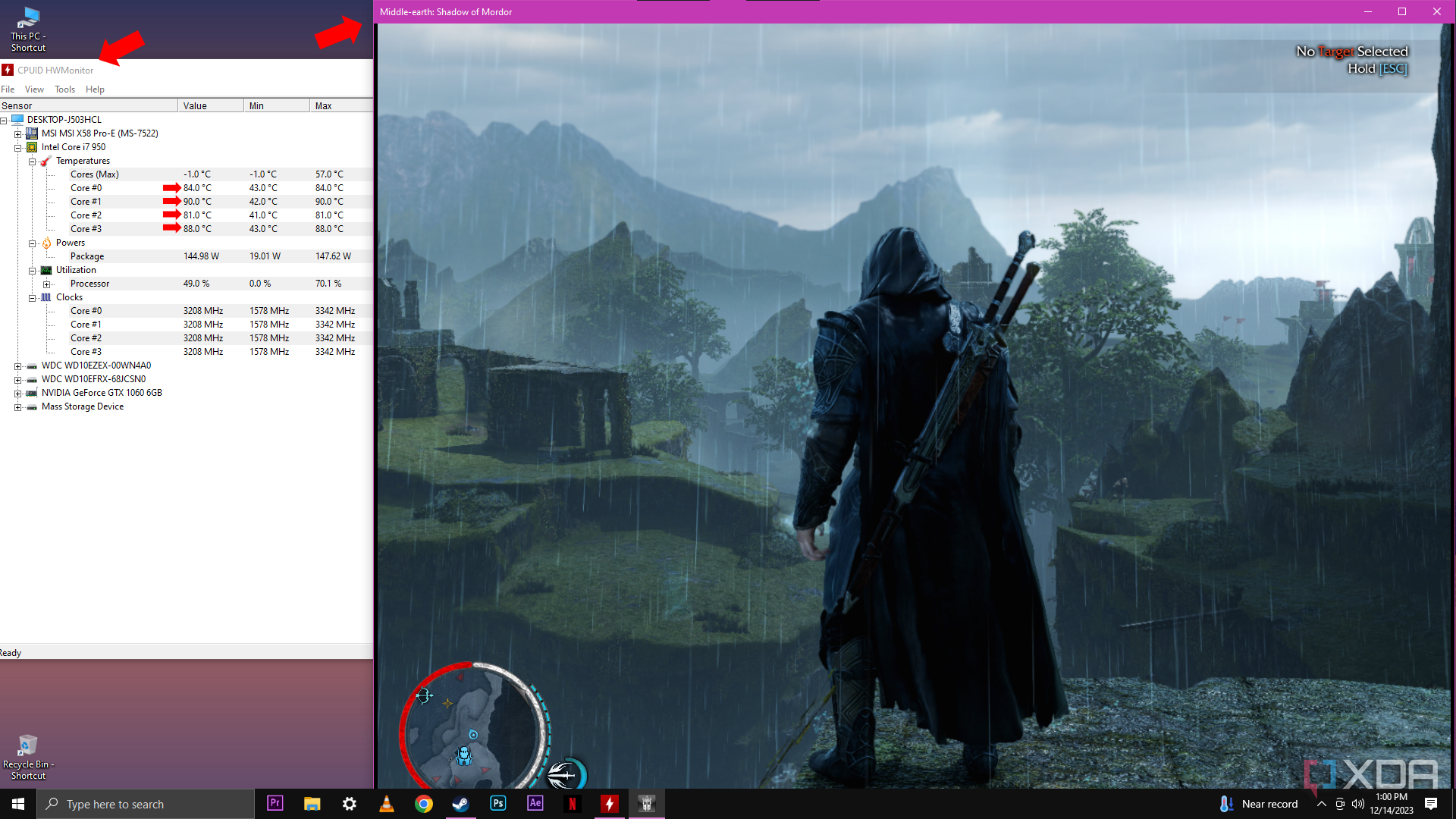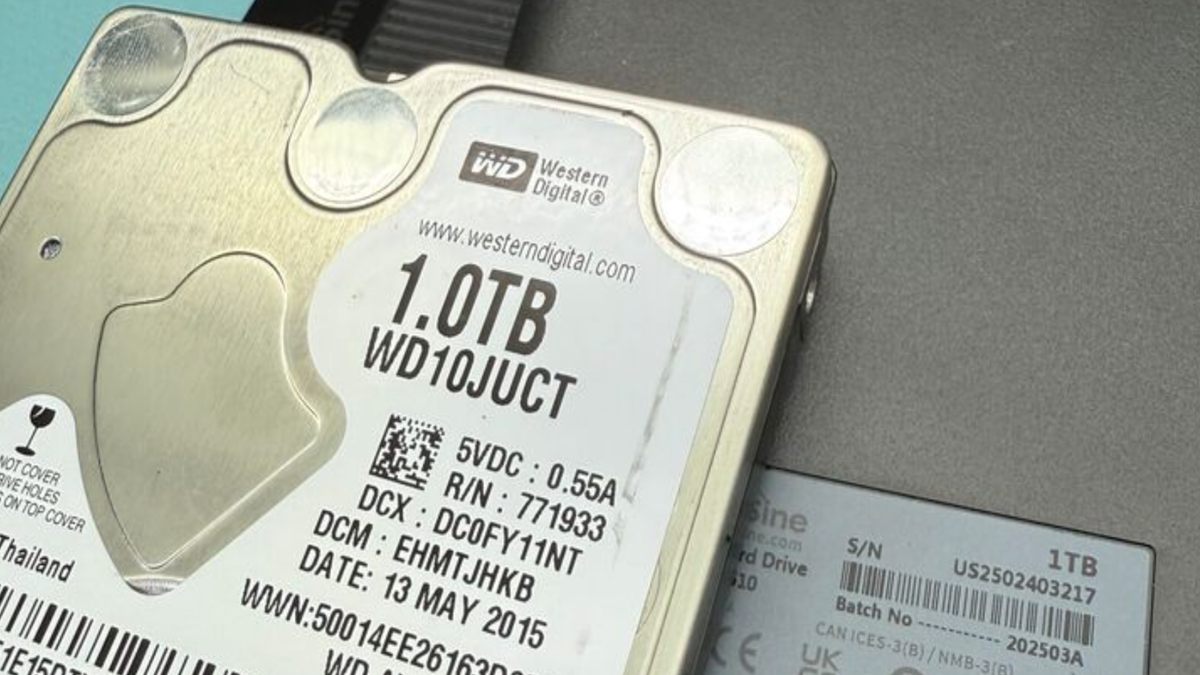Replacing the thermal paste is one of those PC maintenance tasks most people, including myself, don't think about until performance seems off. You apply it when you first build your PC, or it comes pre-applied from the factory in the case of CPU coolers and GPUs, and it quietly does its job for years without any obvious signs of wear. The thing is, thermal paste doesn't last forever, even the expensive ones. Over time, it dries out, loses its consistency, or simply stops performing as well as it did when it was fresh.
That's why you need to replace the thermal paste on your CPU and GPU periodically to maintain optimal cooling performance. But how do you know when it's time for a reapplication? Well, there are a few telltale signs you can look out for. From subtle temperature increases to high fan speeds and full-on thermal throttling, each can indicate that the thermal compound is no longer transferring heat effectively to the heatsink. At this point, it may be time to reapply fresh paste before the situation worsens.
Temperatures are consistently higher
Your CPU or GPU is running hotter than it used to, even at idle
If you monitored your PC using MSI Afterburner shortly after building it, just to see how your hardware performs, you probably know how hot your CPU or GPU gets while gaming or during heavy workloads. Over time, if you notice those same tasks pushing the temperatures of these components several degrees higher, your thermal paste has probably dried out a bit and lost its effectiveness. If you want to be sure of this, you should also monitor the idle temperatures of your CPU or GPU and make sure the cooler isn't faulty.
When thermal paste starts to degrade, heat transfer to the cooler becomes less efficient. As a result, even when your PC isn't under load, your CPU or GPU can run warmer than it used to. For instance, if your CPU used to idle around 40C, but now it idles around 50C, it's possible that the thermal paste has dried up. Sure, you could argue that the cooler itself could be faulty, or dust buildup in the radiator might be raising temperatures. That's exactly why you should take note of some of the other signs I'm about to share.
Fans spin faster and louder than before
It's a sign that your cooler is trying to make up for poor heat transfer

Most of us don't monitor our CPU and GPU temperatures while gaming unless we think something's wrong. One of the first things that prompts us to check the temperatures is higher fan speeds. When thermal paste starts to dry out or break down, it becomes harder for the cooler to pull heat away from the CPU or GPU. To compensate for this, the cooler ramps up its fans sooner and maintains a higher fan speed, which leads to an audibly louder PC even when it's not under heavy workloads.
So, if your PC used to stay quiet while browsing or performing basic tasks, but now you start hearing the fans spin up frequently, poor heat transfer due to thermal paste degradation might be the culprit. Again, it's also possible that your CPU cooler's pump is dying or that dust buildup in the heatsink or radiator is affecting airflow. However, if you've ruled those out and the fan behavior still seems aggressive, it wouldn't hurt to remove the CPU cooler and check the thermal paste yourself. Just make sure you have a fresh tube of thermal paste handy.
Thermal throttling during heavy workloads
If your CPU slows down to avoid overheating, you know it's serious

High fan speeds serve as a clear audio cue that something's wrong with either the CPU cooler or the thermal paste. But when I want a visual cue, thermal throttling is what I look out for. It's one of the most obvious signs that your cooling solution isn’t keeping up anymore. Thermal throttling doesn't always happen immediately, but kicks in after your CPU or GPU has been under heavy load for a few minutes, like gaming, rendering, or running a synthetic benchmark.
For instance, when I'm gaming and I suddenly encounter FPS drops or stuttering, I immediately check the temperatures and clock speeds of both the CPU and GPU. If the temperatures are hovering in the high 80s or low 90s (in Celsius), I know the CPU or GPU is likely lowering its clock speeds to prevent overheating. That downclock is usually the reason behind such frame rate dips or stutters. So, if you're experiencing similar issues, and you're confident your cooler is functioning properly, your thermal paste might just be the culprit.
You haven't reapplied in a long time
Depending on the paste, you may need to reapply every 1–3 years
Like I said earlier, thermal pastes don't last forever. Depending on the paste you initially used for your CPU, you may need to reapply a fresh coat sooner rather than later. Stock or cheap thermal pastes tend to dry out in a year or two, while some high-end options, like Thermal Grizzly Kryonaut Extreme and Noctua NT-H2, last for two to three years, sometimes even longer. Regardless of how expensive the paste is, the reality is that it wears out over time and loses consistency, which affects its thermal conductivity.
Therefore, if it has been years since you applied thermal paste to the CPU or GPU, it's probably time to replace it anyway before temperatures start creeping up. You may also need to replace it sooner if your components run hot most of the time. For instance, I had to replace the stock thermal paste on my RTX 3090 within a year because I used it to mine Ethereum back in 2021 for several months. The GPU was under constant load, and once I was done mining, the GPU hotspot temperatures were noticeably higher, and fans were ramping up aggressively.
It doesn't hurt to repaste a bit sooner
You can't tell exactly when your thermal paste has gone bad, as it gradually deteriorates over time. Temperatures start creeping up, and you probably won't even notice until it's too late. That's why it's important to remember when you last applied the paste. Regardless of the cost, I recommend repasting your CPU and GPU every two years to maintain optimal cooling performance. Sure, it might feel unnecessary when your PC seems to be working just fine, but that's the thing with thermal paste. It doesn't show any obvious signs of degradation until your cooler is already struggling to keep up. Replacing the thermal paste on both your CPU and GPU typically takes less than an hour. So why put it off and risk dealing with overheating later?
.png)










 English (US) ·
English (US) ·